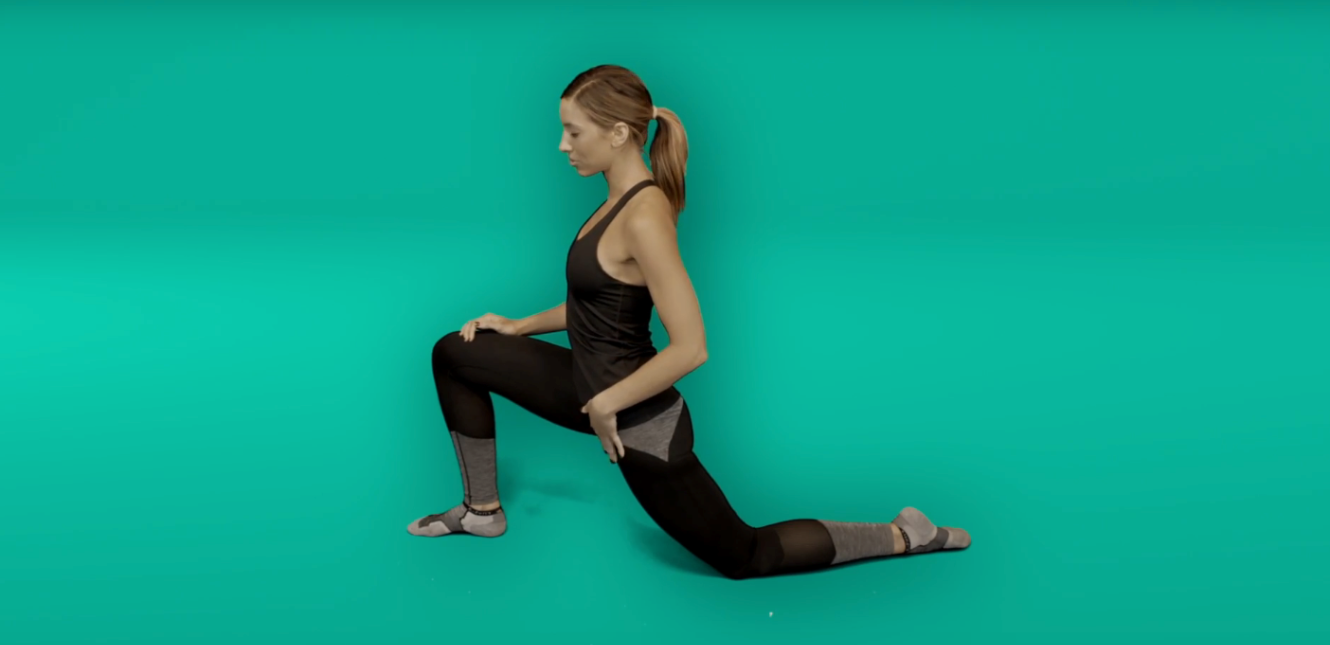
Is TikTok's 12-3-30 workout any good?
Peer reviewed by Dr Krishna Vakharia, MRCGPLast updated by Victoria RawLast updated 5 Mar 2025
Meets Patient’s editorial guidelines
- DownloadDownload
- Share
- Language
- Discussion
Not all TikTok fitness trends are backed by science, but can walking at a steep incline really help you burn more calories than running? An expert examines the 12-3-30 trend, and explains when adding it into your fitness routine might benefit you the most.
In this article:
Continue reading below
What is the 12-3-30 workout?
The 12-3-30 workout is a straightforward, low-impact alternative to running. It involves walking on a treadmill at a steep incline.
All you need to remember are three numbers:
12 - set the incline to 12.
3 - turn the speed to 3 mph (or 4.8kmph).
30 - walk for 30 minutes.
The workout was made famous by social media star Lauren Giraldo, who was looking for an alternative to running - a treadmill activity she found too intimidating to face in the gym.
Like running, the 12-3-30 treadmill workout is cardiovascular, meaning it keeps your heart healthy by making it work harder to pump blood around your body. This also helps to burn calories and fat - which has made it popular among TikTokers looking for new ways to lose weight.
Will I lose weight if I do the 12-3-30 workout every day?
12-3-30 gets your heart racing and muscles moving - and this can help create a calorie deficit to support weight loss, so long as you also eat a healthy diet and watch your portion sizes.
Walking at a steep incline is also a form of strength training. If your goal is to lose weight, fitness experts recommend combining cardio and strength training.
The more muscle you have, the harder your body works - even when at rest - to maintain them, and this means you use up more calories.
According to Helen O'Leary, physiotherapist and clinical director at Complete Pilates, the 12-3-30 workout strengthens your back muscles particularly well. This helps build muscle in an often-neglected area while contributing to overall weight loss.
"Avoid holding onto the treadmill handrails so that you work as hard as possible," adds the fitness expert.
Continue reading below
How many calories does the 12-3-30 workout burn?
So far, there are no big studies on this fitness trend - which means there's no strong data. The number of calories you burn will also depend on other factors, such as your weight, age and fitness level.
Perhaps more important is your beginning fitness level, and whether this makes 12-3-30 a happy middle ground option between walking and running. It's generally known that walking at an incline burns more calories than walking, but less than running.
So, if you struggle to run but find walking not challenging enough, 12-3-30 may bridge the gap and provide just the right level of intensity.
This isn't to stay that those who feel fit and able to run should dismiss this workout. If you find that running 30 minutes a day is too much - mentally or physically - 12-3-30 could add some variety into your fitness regime and give your joints a much-needed break.
What are the benefits of the 12-3-30 workout?
There are several reasons you might want to give 12-3-30 a try.
O'Leary talks us through the potential benefits:
For some people - those that aren't as active, are recovering from an illness or injury, or those starting to get back into exercise - the 12-3-30 workout is a great stepping stone to build up fitness. It will get your heart rate up and it's suitably hard for most people. This means that you get all the health benefits of vigorous exercise, just like running.
It's heart-healthy cardio. Walking uphill against the force of gravity works your heart harder than ground level walking.
It's strength building, especially around your back, leg, and core muscles.
It's pretty straightforward to remember.
While this workout isn't likely to improve your fitness more than running, it's a handy high-intensity but low-impact alternative which doesn't place stress on your joints.
Unlike running or spinning, 12-3-30 is a slower pace that involves less of that out-of-breath feeling.
Continue reading below
What are the risks of the 12-3-30 workout?
As with any exercise routine, you need to check it's compatible and safe with certain conditions or injuries.
"Any age and fitness level can do the 12-3-30 workout," says O'Leary, "but you need to consult a fitness expert or physiotherapist first if you have a heart condition or any joint problems - with your knees, for example - that might get aggravated going uphill. If you experience any pain while doing it - that isn't normal muscle ache or fatigue - then you should stop and seek advice."
Other 12-3-30 risks and considerations
Be careful if you suffer from upper and lower back pain - walking at this incline for so long places a lot of stress in these areas.
Unlike HIIT and other forms of interval training, which switch up speed and difficulty, walking at a set pace lacks variety. Physically, using the same muscles every day will see any benefits and changes eventually flatten out, because your body is adaptive and needs variation. Mentally, this routine may also grow stale, and when you're bored, you're less likely to stick to a fitness regime long-term.
Working the same muscles and joints every day also increases your likelihood of over-use and injury.
To reduce your chance of injury:
Wear well-fitting running shoes.
Stay hydrated.
Stretch your muscles before and after the workout - don't neglect the leg muscles as these will carry a lot of strain, for example your quads, glutes, calves, and hamstrings.
Warm your muscles up and down by starting and ending your 12-3-30 workout with a five-minute walk at 0 incline on the treadmill.
Maintain good posture throughout the workout - stand tall, roll your shoulders back, and don't bend at your waist. This opens up your chest for breathing and engages your core muscles.
Is the 12-3-30 workout worthy of the hype?
There are many positives to this workout routine. It's a relatively gentle yet effective way to get your heart rate up, burn body fat, and strengthen muscles all over your body.
But this doesn't mean you should pack in all other forms of exercise and dedicate your fitness time solely to steady but steep incline walking. You'll see the most benefits when you use 12-3-30 as part of a varied fitness regime.
In terms of difficulty and intensity, it slots between walking without incline and running.
O' Leary explains how 12-3-30 compares.
Walking, 12-3-30, running
"Walking in general is a great form of lower impact exercise, with health benefits that include strengthening your bones and muscles, improving your balance, and the prevention and management of conditions such as heart disease, high blood pressure, and type 2 diabetes."
Yet, walking is low to moderate intensity, and this may not be enough to get you to your weight loss or fitness goals - particularly if you're reasonably healthy already.
"12-3-30 can be a great way of making walking more intense, without doing the higher impact activities like running. This is because the steep incline has you working against gravity more, which makes your muscles - including your heart - work harder.
"However, the reality is that your body and muscles don't have to generate and absorb as much force as they do for running. Some people - whether they're new to fitness, older with more worn joints, or recovering from injury - struggle to run because you have to be strong to take this much load."
In this sense, the 12-3-30 offers a great middle ground option - but it can be used by anyone looking for more variety.
As this is key in any fitness training routine, it can't hurt to add 12-3-30 as an extra form of cardio, in between other activities like running, swimming, and spinning. As our expert points out, walking at an incline also works different muscles, "so it is simply different!"
Patient picks for Exercise and physical activity

Healthy living
Video: Hip pain exercises
Hip injuries are common in all age groups. The most common cause of chronic (long-standing) hip pain in adults is osteoarthritis. Because the hip is such a complex joint, hip pain can be caused by many different things including: muscular injuries; ligament injuries; bursa injuries; cartilage tears; bone problems; fractures; reduced blood flow to the hip joint; or infection.
by Lilly Sabri, MHPC

Healthy living
Could cold exposure boost your health and wellbeing?
We tend to associate plunging winter temperatures with the cold and flu season. But did you know that cold showers and cold water swimming have proven benefits for health? We ask the experts about the dos and don'ts of cold exposure.
by Lynn Stephen
Continue reading below
Article history
The information on this page is peer reviewed by qualified clinicians.
Next review due: 6 Mar 2028
5 Mar 2025 | Latest version
26 May 2023 | Originally published
Authored by:
Amberley Davis

Ask, share, connect.
Browse discussions, ask questions, and share experiences across hundreds of health topics.

Feeling unwell?
Assess your symptoms online for free
Sign up to the Patient newsletter
Your weekly dose of clear, trustworthy health advice - written to help you feel informed, confident and in control.
By subscribing you accept our Privacy Policy. You can unsubscribe at any time. We never sell your data.